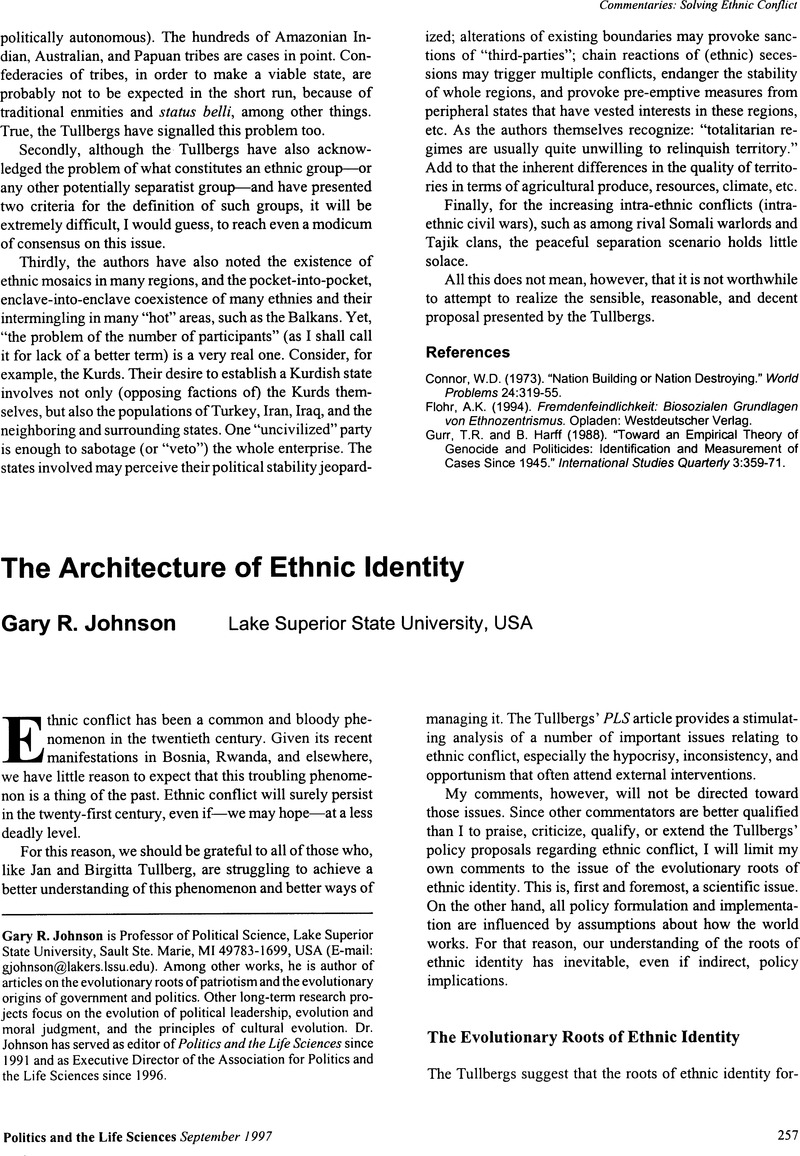Crossref Citations
This article has been cited by the following publications. This list is generated based on data provided by Crossref.
Maxwell, Mary
1998.
Toward a Moral System for World Society: A Reflection on Human Responsibilities.
Ethics & International Affairs,
Vol. 12,
Issue. ,
p.
179.
MacDonald, Kevin
2001.
An Integrative Evolutionary Perspective on Ethnicity.
Politics and the Life Sciences,
Vol. 20,
Issue. 1,
p.
67.
Lustick, Ian S.
and
Miodownik, Dan
2002.
The institutionalization of identity: Micro adaptation, macro effects, and collective consequences.
Studies in Comparative International Development,
Vol. 37,
Issue. 2,
p.
24.
LUSTICK, IAN S.
MIODOWNIK, DAN
and
EIDELSON, ROY J.
2004.
Secessionism in Multicultural States: Does Sharing Power Prevent or Encourage It?.
American Political Science Review,
Vol. 98,
Issue. 2,
p.
209.
Bereketeab, Redie
2011.
The Ethnic and Civic Foundations of Citizenship and Identity in the Horn of Africa.
Studies in Ethnicity and Nationalism,
Vol. 11,
Issue. 1,
p.
63.
Bereketeab, Redie
2014.
Redefining National Identity and Nation‐Building inPost‐secessionSudans: Civic and Ethnic Models.
Studies in Ethnicity and Nationalism,
Vol. 14,
Issue. 2,
p.
302.
Yap, Wei Jie
Christopoulos, George I.
and
Hong, Ying-yi
2017.
Physiological responses associated with cultural attachment.
Behavioural Brain Research,
Vol. 325,
Issue. ,
p.
214.
Berkman, Matthew
2018.
The West Bank “Alternative Peace Movement” and its transnational infrastructure: a case study in “primordialist universalism”.
Journal of Modern Jewish Studies,
Vol. 17,
Issue. 3,
p.
304.



